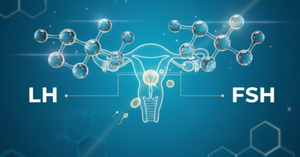The menstrual cycle is not just about periods, it is a rhythm with four distinct phases, each influencing energy, mood, and physical well-being. The luteal phase, which occurs after ovulation and before menstruation (typically days 15–28 of the cycle), is when many women feel their energy dip and PMS symptoms emerge.
During this time, the body prepares for a possible pregnancy by producing more progesterone. If pregnancy does not occur, both progesterone and estrogen levels begin to drop, setting the stage for premenstrual symptoms. This hormonal shift can affect everything from mood and appetite to digestion and sleep.
The combination explains why many women find themselves reaching for extra caffeine or comfort food yet these quick fixes often worsen symptoms.
Premenstrual syndrome (PMS) is a collection of physical and emotional symptoms that appear in the late luteal phase. Common symptoms include:
According to the NHS, around 3 in 4 women experience PMS at some point, and about 1 in 20 may experience a more severe form known as PMDD (premenstrual dysphoric disorder).
Food choices during this phase can either stabilize or worsen PMS symptoms. Focus on:
Smart swap: Instead of milk chocolate, choose a small piece of dark chocolate with almonds for magnesium and healthy fats.
High-intensity workouts may feel overwhelming during the luteal phase, but gentle exercise can work wonders:
Research published in BMC Women’s Health shows that moderate physical activity reduces PMS severity and improves overall quality of life.
Progesterone increases sleepiness, yet PMS often brings restlessness. To improve sleep quality:
Even a 20-minute power nap can recharge energy without interfering with nighttime sleep.
Mood swings in the luteal phase can feel unpredictable, but mindfulness can help.
Studies on mindfulness-based therapy show improvements in PMS-related anxiety and irritability, proving that mental care is as important as physical support.
If symptoms interfere with daily life, it may be more than PMS. Conditions like PMDD require medical support. Consult a gynecologist if you experience:
Treatments may include lifestyle strategies, supplements, or medical therapy.
Rather than seeing this phase as a barrier, think of it as a reminder to slow down. The luteal phase offers a natural pause for reflection, rest, and mindful self-care. Supporting your body with the right foods, gentle movement, and emotional awareness can transform this phase from a struggle into a time of intentional nurturing.
About PeriodSakhi
PeriodSakhi is your trusted companion for understanding your menstrual health. With easy-to-use tools, it helps you track your periods, ovulation, fertility, moods, and symptoms, while providing insights into your overall reproductive and hormonal health. PeriodSakhi also serves as a supportive online community where women can share experiences, find reliable information, and access expert-backed guidance on menstrual health, PCOS, pregnancy, lifestyle, and more.
Disclaimer
The views, thoughts, and opinions expressed in this article/blog are solely those of the author and do not necessarily reflect the views of PeriodSakhi. Any omissions, errors, or inaccuracies are the responsibility of the author. PeriodSakhi assumes no liability or responsibility for any content presented. Always consult a qualified medical professional for specific advice related to menstrual health, fertility, pregnancy, or related conditions.
Start the conversation
No comments yet. Start the conversation by leaving the first comment!





